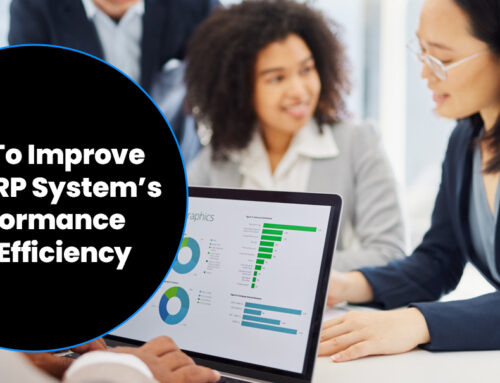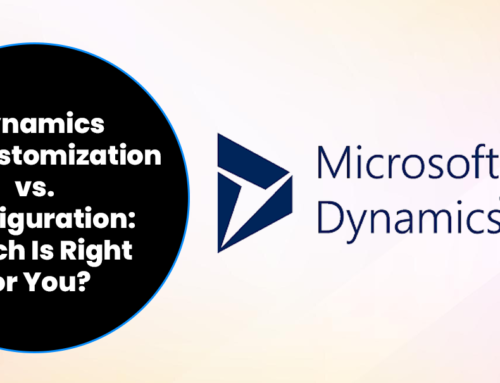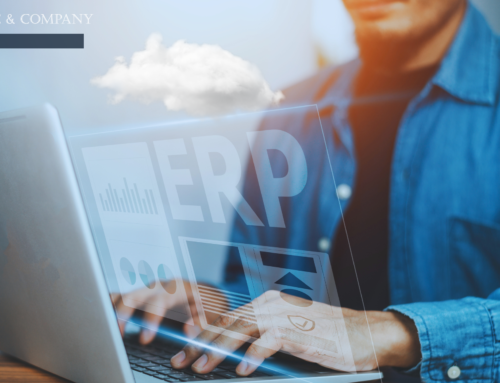
Enterprise resource planning (ERP) software has undergone tremendous changes in recent years and 2022 is expected to bring even more evolution when it comes to these mission-critical software platforms.
In fact, ERP systems have already seen dramatic advancement. The great popularity of these enterprise systems makes it easy to forget that relatively few companies used this technology until recently. On-premise enterprise resource planning systems were long the exclusive domain of massive corporations, with huge data centers packed with hardware that drove their businesses forward. On-prem ERP technology was simply too pricey for a vast majority of companies. But then, a new innovation came along, opening the door to ERP for startups, small businesses, and midsize enterprises. Enter the cloud.
2022 Trend: More Advancement for Cloud ERP
The COVID-19 pandemic brought a multitude of changes to the technology sector and ERP platforms were not unaffected. The pandemic drove the advancement of cloud solutions in a fairly dramatic way. This impacted the realm of enterprise software, opening the door to even more cloud-based ERP solutions.
The COVID-driven work-at-home movement led to the widespread implementation of cloud technology. This resulted in a greater level of comfort with the cloud, allowing for new and innovative uses of this continually evolving technology. Developers and vendors have certainly picked up on this fact and it is resulting in the development of more and more cloud-based ERP offerings. We can absolutely expect to see greater development in the area of cloud ERP throughout 2022 and beyond.
2022 Trend: More Migration to Cloud ERP and Hybrid Deployments
As business leaders achieve a greater sense of comfort with cloud platforms, we can expect to see more migration from on-premises ERP to cloud-based ERP platforms. Others may realize that it makes sense to keep some aspects of their enterprise software infrastructure on-premise. For these organizations, a hybrid deployment makes a bit more sense. Therefore, we can expect to see an increasing number of hybrid ERP deployments with some components based in an on-premises data center and other components migrated to a cloud infrastructure.
There is no question that ERP migrations are complex and an increasing number of organizations are opting for a phased migration, leveraging a hybrid deployment as part of their strategy. This allows for a gradual shift from on-prem to cloud-based ERP.
2022 ERP Trend: Proliferation of Mobile ERP
Mobile ERP had already entered the tech sphere when the COVID-19 pandemic arrived. The COVID-driven remote work trend drove enterprise mobile solutions forward in a dramatic way, similar to what occurred with cloud technology.
Today, a vast majority of business leaders have come to appreciate the value of integrating mobile-friendly capabilities into their ERP platforms. Mobile ERP tools allow for a higher level of user engagement and more effective real-time data flow. In short, users are empowered to use those mobile-friendly ERP tools more often and incoming data flows are improved in a way that drives productivity and profitability. It is benefits such as these that are driving the adoption of mobile-friendly ERP solutions in 2022 and beyond.
ERP Trends for 2022: ERP Gets Smarter With AI and Machine Learning
Artificial intelligence (AI) and machine learning (ML) has advanced by leaps and bounds over the past decade and 2022 will be no exception. More and more enterprise resource planning software developers are integrating AI and machine learning capabilities to create “smart” and “intelligent” business tools.
One prime area of development surrounds analytics and data. The ERP platform’s centralized database is a key feature that allows for a bird’s eye view of a company’s metrics and data. Integrate machine learning and AI capabilities in a strategic manner and you can transform all of this data into actionable insights for data-driven decision-making. From the identification of inefficiencies and vulnerabilities, to automation and data-driven improvements in processes and workflows, the possibilities are truly limitless. AI and machine learning are expanding the potential of today’s ERP systems at a rapid clip that we expect will continue far beyond 2022.
2022 Trends in ERP: Continued Development in Insights and Analytics
As we mentioned above, the centralized data stores of an ERP platform are perfect for generating useful analytics and insights. But AI and machine learning aren’t the only factors bolstering ERP analytics in 2022.
The last couple years have seen a new level of emphasis on real-time analytics. This makes sense when you consider how many business processes move at a dizzyingly fast clip. In many cases, data from two minutes ago may be more or less useless. Real-time data can be extremely useful and that usefulness extends far beyond analytics and insights. A real-time data flow can be used to improve processes and workflows across a variety of different operations and business types. Real-time data is key for achieving and maintaining operational agility, especially in a fast-paced or highly-competitive work environment.
Consider how data impacts ecommerce and logistics, for example. Having real-time data on-hand allows for improved efficiency and faster fulfillment and delivery times. That brings tremendous value to the table and it is just one example of real-time data value. It is clear that enterprise software developers have come to recognize this value. Subsequently, real-time ERP analytics are becoming the norm with more and more vendors opting to include this functionality within their platforms in 2022.
Analytics and insights are also advancing in some notable ways, both within the realm of ERP and beyond. Data-driven decision-making is no longer the exception; it is becoming the rule. As such, 2022 is certain to bring more ERP data analysis tools, such as integrated analytics and data visualization tools. This is great news when you consider the power of the ERP platform’s centralized database — it allows for a bird’s eye view of an organization’s data, while still allowing for those more narrow and precise data dives.
An enterprise resource planning solution holds the power to transform a business, but choosing ERP software can be overwhelming. Actually implementing and deploying that enterprise software is no small feat either. But the team at Cox-Little is here to help. We have extensive experience with ERP implementations and deployments. Contact the team at Cox-Little today to discuss how we can partner with your organization to bring your ERP implementation and deployment to the finish line.





